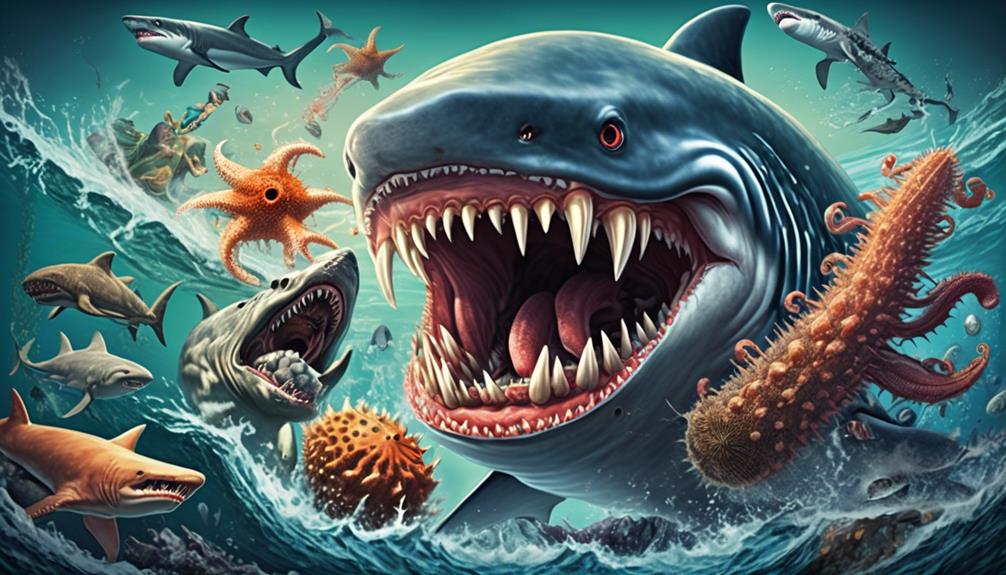Are you ready to embark on a journey into the intriguing world of villainous animals that have a penchant for devouring sea urchins? Prepare to be captivated as we unravel the mysterious ways of these cunning creatures who roam the depths in search of their spiky prey.
From the resourceful sea otters to the crafty octopuses, a diverse cast of predators awaits, each armed with their own unique strategies for feasting on these prickly delicacies.
But that’s just the beginning – there are even more surprising and lesser-known sea urchin eaters lurking beneath the surface.
So, get ready to witness the sinister ways in which these underwater villains satisfy their insatiable appetite, as we peel back the layers of this captivating topic.
Sea Otters: Shell-Opening Rock Users
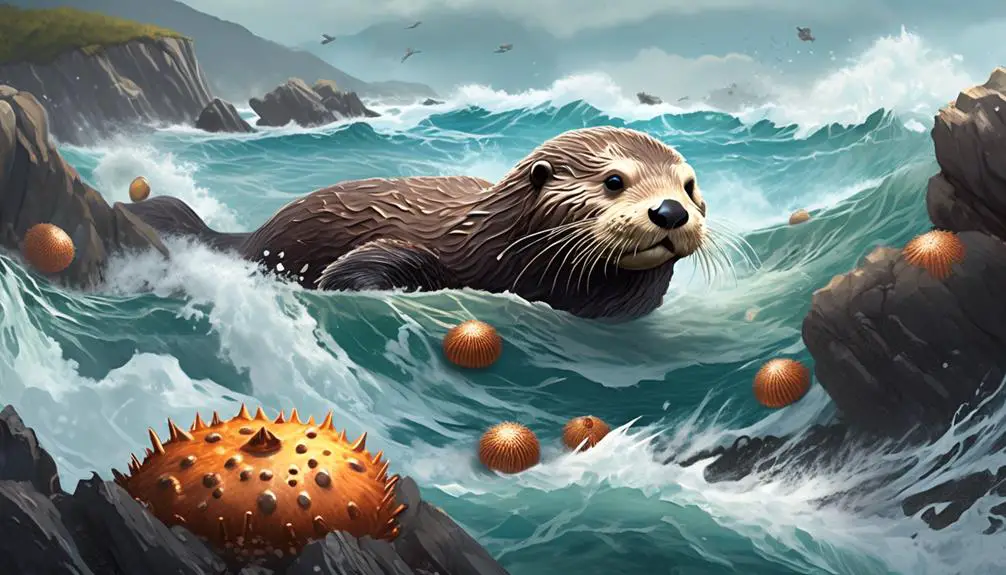
Sea otters, indigenous to the northern and eastern sides of the North Pacific Ocean coasts, are remarkable creatures known for their ability to use rocks as tools to open the shells of their prey.
These intelligent mammals have a specialized technique for obtaining their food, which primarily consists of sea urchins, clams, crabs, and other shellfish. When hunting for sea urchins, sea otters dive to the ocean floor and locate their prey.
Once a sea urchin is spotted, the otter skillfully positions itself above the target and retrieves a rock from the seabed. With the rock in one hand, the otter repeatedly strikes the urchin’s hard shell until it cracks open, revealing the soft and nutritious flesh inside.
This behavior demonstrates the sea otter’s exceptional tool use and problem-solving skills. By utilizing rocks as tools, sea otters are able to access their preferred food sources and maintain a balanced diet. This unique adaptation sets them apart from other marine mammals and showcases their remarkable intelligence and resourcefulness in their quest for sustenance.
Octopuses: Opportunistic Sea Urchin Eaters
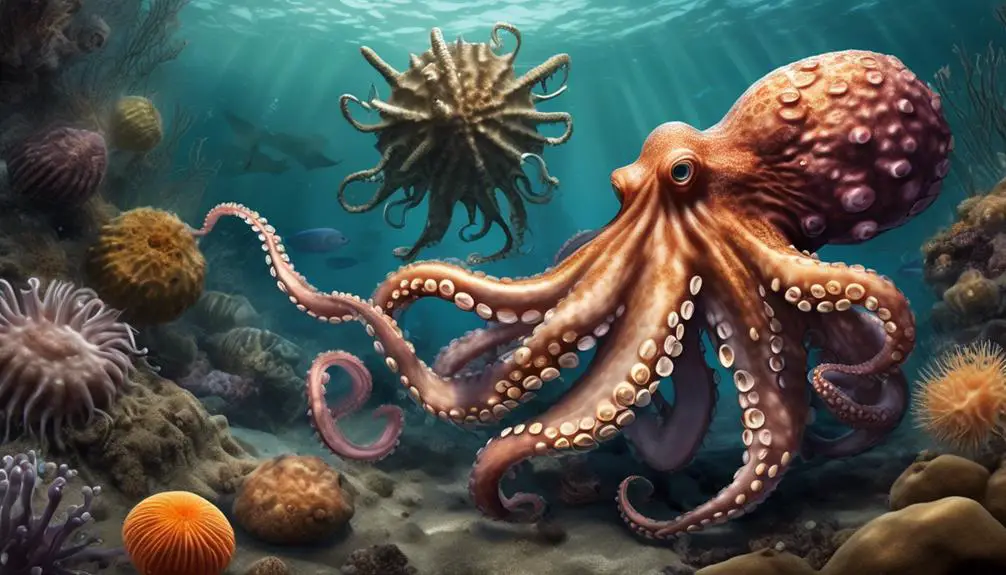
Octopuses, with their eight limbs and soft bodies, are opportunistic eaters of sea urchins, often consuming them when other food sources become scarce. These intelligent cephalopods have a diverse diet that includes fish species, crustaceans, mollusks, and even other octopuses. However, when their usual prey is scarce, they turn to sea urchins as a readily available food source.
Octopuses have several strategies to capture and consume sea urchins. Their strong arms are equipped with suction cups and sharp suckers that allow them to immobilize and manipulate their prey. Once an octopus catches a sea urchin, it uses its beak, located at the center of its arms, to break open the spiny shell. This allows the octopus to access the nutritious flesh inside.
Sea urchins are a valuable food source for octopuses due to their high protein content. Additionally, sea urchins are slow-moving creatures, making them easier for the octopuses to catch and consume. The octopuses’ ability to camouflage themselves also aids in ambushing their prey.
It’s important to note that octopuses don’t solely rely on sea urchins for sustenance. They’re highly adaptable predators and will consume a variety of prey depending on availability. This opportunistic feeding behavior is essential for their survival in the ever-changing marine environment.
Parrot Fishes: Coral Reef Grazers
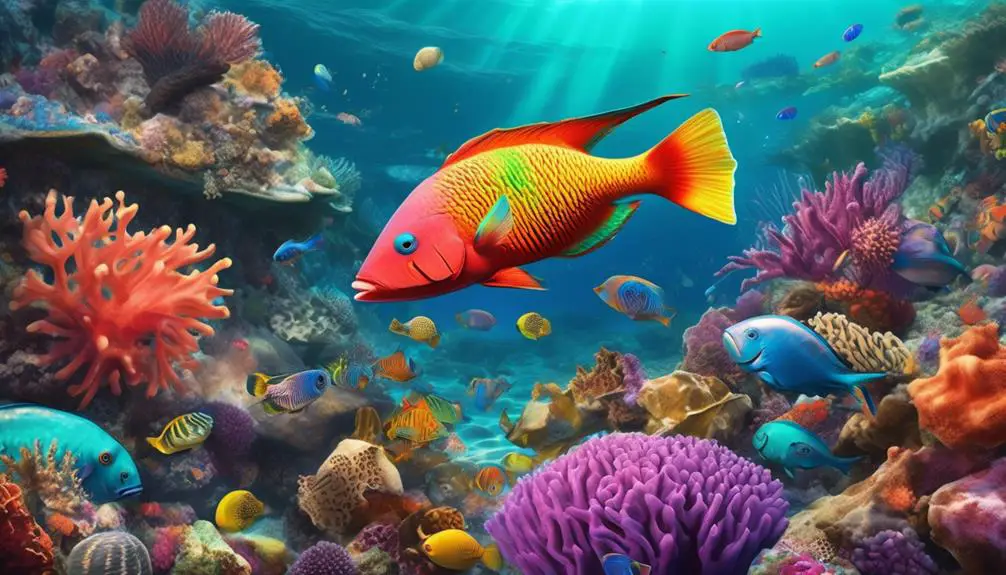
Parrot fishes, known for their vibrant colors and unique beak-like mouths, play a crucial role as coral reef grazers. These fishes are commonly found in seagrass beds, rocky coasts, and most notably, coral reefs. With approximately 90-95 species, parrot fishes come in various sizes, with most reaching lengths of 30-50 cm.
As herbivores, they primarily feed on epilithic algae, which grow on rocks and coral surfaces. In their diet, parrot fishes occasionally include small organisms. However, some species, like the green humphead parrotfish, have a specialized diet and feed on polyps and living corals, making them important players in the dynamics of coral reef ecosystems.
Parrot fishes have a unique feeding strategy. They use their beak-like mouths to scrape algae off the surface of rocks and corals, leaving behind a clean substrate for new coral growth. Additionally, their constant grazing helps prevent the overgrowth of algae, which can suffocate and kill corals.
Thus, parrot fishes contribute significantly to the health and survival of coral reefs, making them essential in maintaining the delicate balance of these diverse and vibrant ecosystems.
Starfishes: Wrapping Predators of Sea Urchins
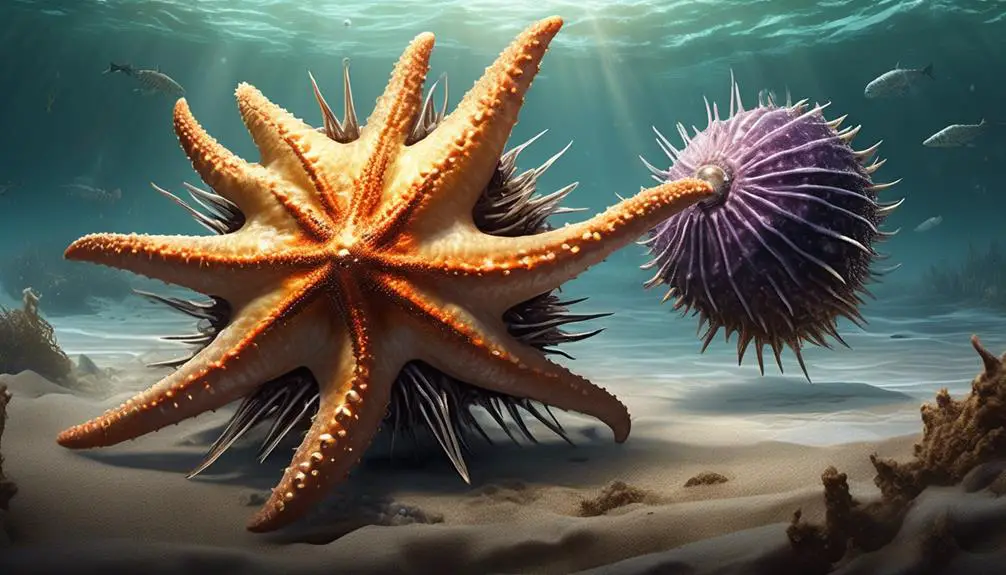
With their unique feeding strategy and specialized adaptations, starfishes emerge as formidable predators in the intricate web of marine ecosystems. Belonging to the Asteroids class, starfishes have a star-shaped body with five arms that they use to capture and consume their prey. These generalist predators are known to feed on small animals like snails, bivalves, and microalgae. However, they also have a particular appetite for sea urchins.
When starfishes encounter sea urchins, they employ a clever technique to subdue their prey. They wrap themselves around the body of the sea urchin, using their tube feet to grip onto its spines. This immobilizes the sea urchin and prevents it from escaping. Once secured, the starfish begins to exert pressure on the sea urchin’s body, gradually weakening its defenses.
To feed on the sea urchin, the starfish then everts its stomach out of its body, inserting it into the sea urchin’s shell. The stomach releases digestive enzymes that break down the sea urchin’s tissues, allowing the starfish to absorb the nutrients. This feeding strategy enables starfishes to consume sea urchins efficiently and plays a crucial role in controlling their population.
The ability of starfishes to wrap themselves around sea urchins showcases their remarkable adaptability and demonstrates their role as a key predator in marine ecosystems. By preying on sea urchins, starfishes help maintain the balance of these delicate habitats, preventing overgrazing and ensuring the survival of other species.
Crabs: Natural Enemies of Sea Urchins
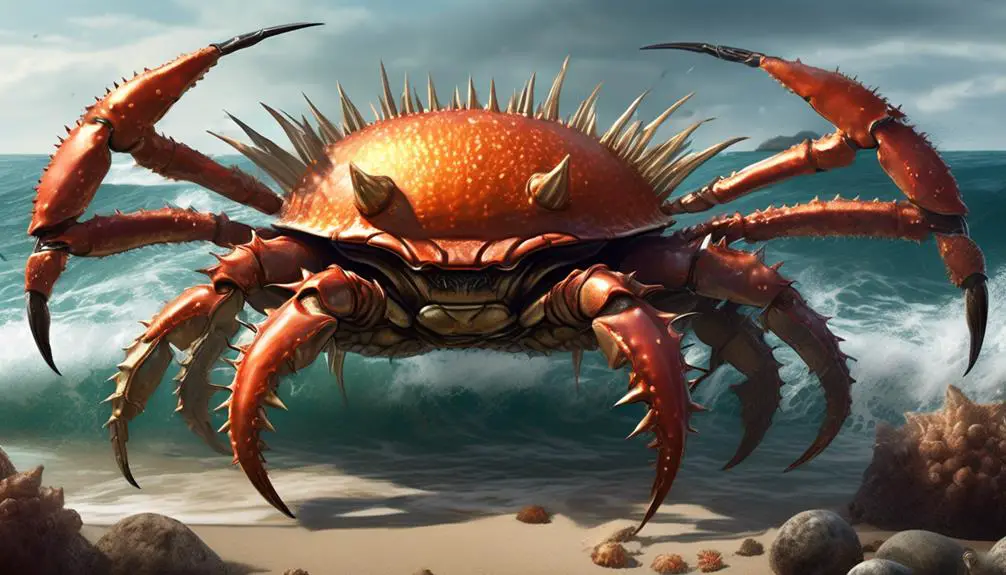
Crabs serve as natural enemies of sea urchins, playing a crucial role in controlling their population and maintaining the balance of marine ecosystems. These crustaceans, belonging to the order Brachyura, are omnivores with a diverse diet that includes shrimp, clams, worms, seaweed, algae, small fish, snails, squid, mussels, and even other crabs. They’re well-equipped to prey on sea urchins due to their sharp claws and strong pincers.
Crabs employ various strategies to capture and consume sea urchins. Some species, such as the green crab, use their sharp claws to break open the urchins’ hard shells. Others, like the ghost crab, use their strong pincers to crush the urchins and access their soft interiors. The Japanese spider crab, known for its impressive leg span of up to 4 meters, can overpower larger sea urchins by using its long, spindly legs to control and manipulate them.
By feeding on sea urchins, crabs help to keep their populations in check. Sea urchins can be voracious grazers, consuming large amounts of kelp and other algae. If left unchecked, these herbivorous invertebrates can decimate kelp forests, which are vital habitats for a wide range of marine species. By preying on sea urchins, crabs contribute to the overall health and diversity of marine ecosystems.
In addition to controlling sea urchin populations, crabs also play a role in nutrient cycling. As scavengers, they help break down dead organisms, returning essential nutrients to the ecosystem. This process promotes the growth of algae and other primary producers, which form the base of the marine food web.
Crabs, with their predatory nature and diverse diet, are important natural enemies of sea urchins. By keeping their populations in check, they ensure the balance and sustainability of marine ecosystems.
Pufferfishes: Toxic Algae Feeders
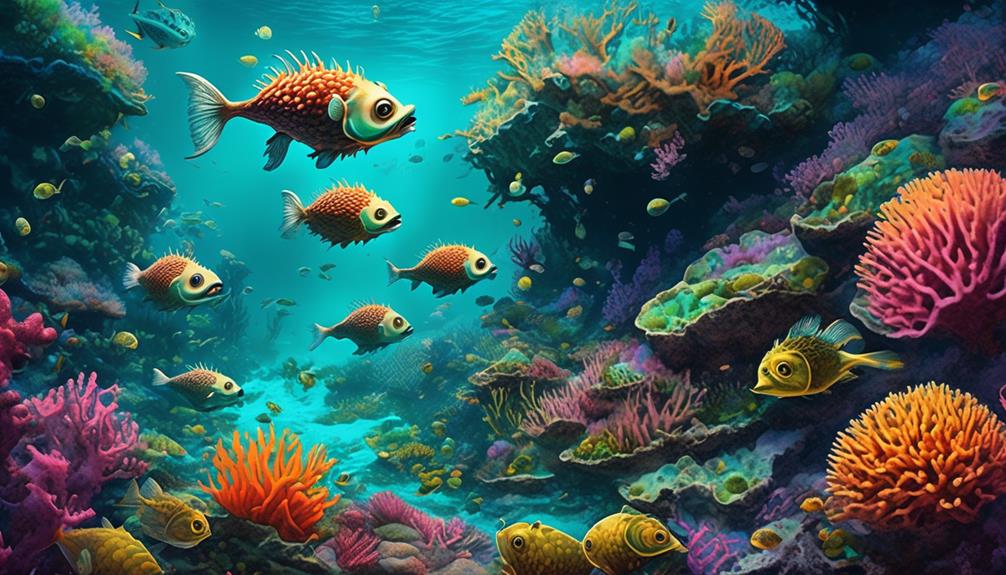
Pufferfishes, also known as blowfishes, are fascinating creatures that possess deadly defense mechanisms. Most species of pufferfishes are highly toxic, with their liver and skin containing tetrodotoxin, one of the most poisonous substances found in vertebrates.
These toxic algae feeders primarily consume algae and invertebrates, including sea urchins, making them important in controlling the population of these spiky creatures.
Interestingly, despite their toxicity, some pufferfish species have their meat considered a delicacy in certain cultures.
Deadly Defense Mechanisms
Pufferfish, known for their deadly defense mechanisms, have a unique feeding strategy that involves consuming toxic algae. These fish belong to the family Tetraodontidae and are primarily found in tropical regions.
Pufferfish feed on a variety of food sources, including algae and invertebrates like shellfish and sea urchins. However, their consumption of toxic algae sets them apart from other species. The toxic compounds present in the algae, such as tetrodotoxin, accumulate in the pufferfish’s liver and skin, making them highly poisonous.
This defense mechanism serves as a deterrent to potential predators, as the ingestion of the pufferfish’s flesh can lead to paralysis, organ failure, and even death. The toxic nature of pufferfishes makes them fascinating yet dangerous creatures in the animal kingdom.
Culinary Delicacies
After exploring the deadly defense mechanisms of pufferfish and their consumption of toxic algae, let’s now delve into the intriguing world of pufferfish culinary delicacies.
Pufferfish, also known as fugu in Japan, is a highly sought-after delicacy in certain cultures. Despite their toxic nature, certain species of pufferfish have meat that’s considered a delicacy when prepared correctly.
However, caution must be exercised during the preparation process, as the liver and skin of pufferfish contain tetrodotoxin, a potent neurotoxin that can be fatal if consumed in large quantities. Skilled chefs undergo rigorous training to ensure the safe removal of these toxic parts, leaving behind a flavorful and tender meat.
Pufferfish dishes are often served as sashimi or in hot pots, providing a unique dining experience for those brave enough to try this risky delicacy.
Moray Eels: Predators of Sea Urchins
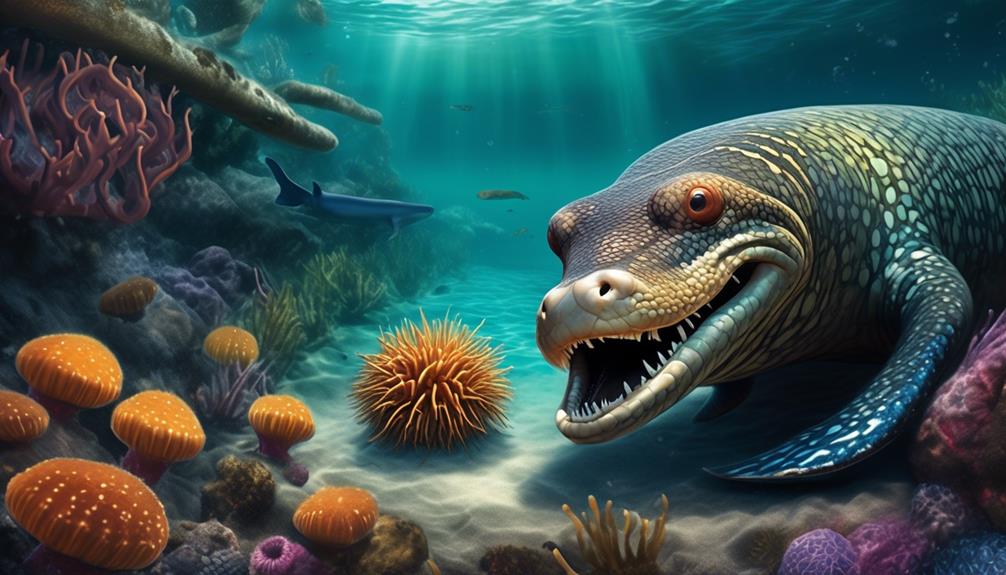
Moray eels, a diverse group of predators found in marine and brackish waters, are known for their voracious appetites and remarkable hunting abilities, including their ability to prey upon sea urchins. These elongated fish, belonging to the eel family, have approximately 200 species globally, each with its own unique pattern and coloration.
Moray eels have sharp teeth and a flexible jaw that enables them to snatch prey with precision. When hunting sea urchins, they use their keen sense of smell to detect their presence and then ambush them swiftly. Once captured, the moray eel’s strong jaws crush the sea urchin’s protective spines, allowing it to access the fleshy interior.
With their powerful bodies and sinuous movements, moray eels are adept at maneuvering through coral reefs and crevices, where sea urchins often seek shelter. Their ability to navigate these intricate environments, combined with their specialized hunting techniques, makes moray eels formidable predators of sea urchins.
Sea Urchin Predators: Lesser-Known Culprits
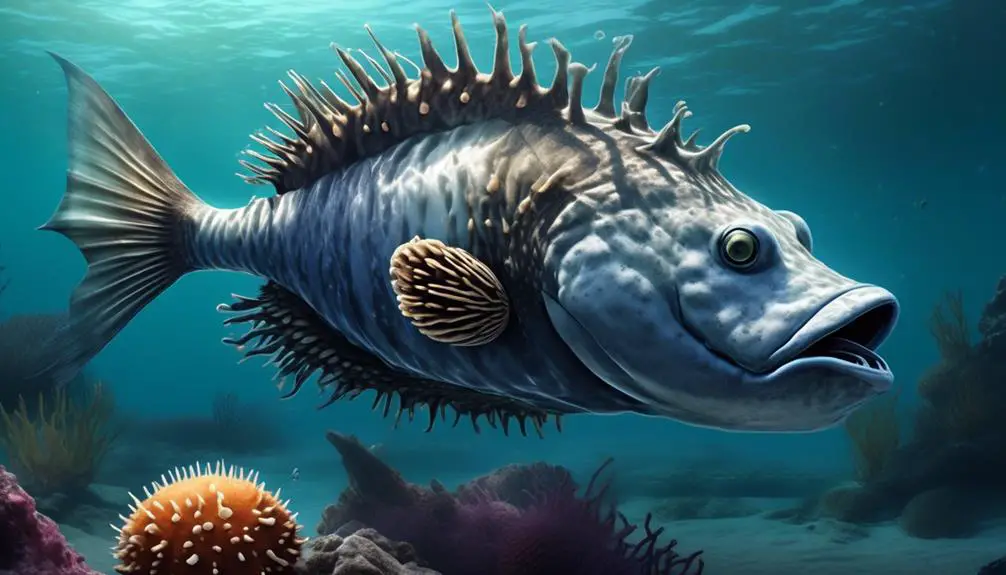
Now, let’s explore some of the lesser-known culprits in the sea urchin’s list of predators. These unlikely sea urchin predators play an important role in the surprising food chain of the ocean.
While sea otters, octopuses, starfishes, crabs, pufferfishes, and moray eels are well-known predators, there are other creatures that also contribute to the control of sea urchin populations.
Discovering these lesser-known culprits provides a deeper understanding of the intricate balance within marine ecosystems.
Unlikely Sea Urchin Predators
Unlikely sea urchin predators include a variety of lesser-known culprits that play a role in maintaining the balance of marine ecosystems. These predators, such as sea otters, octopuses, parrot fishes, starfishes, crabs, pufferfishes, and moray eels, all have unique characteristics that allow them to feed on sea urchins. Sea otters, for example, use rocks as tools to open the shells of their prey, while octopuses occasionally resort to sea urchins when other food sources are scarce. Parrot fishes, on the other hand, are herbivores that primarily feed on epilithic algae but may also include small organisms in their diet, including sea urchins. Starfishes wrap themselves around sea urchins to consume them, and crabs, being natural predators, also prey on these spiky creatures. Pufferfishes, known for their toxicity, feed on sea urchins as part of their diet, and moray eels rely on sea urchins as one of their food sources. These unlikely sea urchin predators contribute to the intricate web of marine ecosystems by maintaining the population balance of sea urchins and preventing their overgrowth.
| Unlikely Sea Urchin Predators | Characteristics |
|---|---|
| Sea Otters | – Weigh around 14-45 kg<br>- Use rocks as tools<br>- Indigenous to the northern and eastern sides of the North Pacific Oceans coasts |
| Octopuses | – Belong to the Octopoda order<br>- Have eight limbs and a soft body<br>- Occasionally eat sea urchins when other food sources are scarce |
| Parrot Fishes | – Herbivores that feed on epilithic algae<br>- Sometimes include small organisms in their diet<br>- Seen in seagrass beds, rocky coasts, and coral reefs |
| Starfishes | – Belong to the Asteroids class<br>- Eat small animals like snails, bivalves, and microalgae<br>- Some are detritivores |
| Crabs | – Belong to the order Brachyura<br>- Omnivores that eat various marine organisms<br>- Natural predators of sea urchins |
| Pufferfishes | – Mostly toxic<br>- Feed on algae and invertebrates<br>- Found in tropical regions |
| Moray Eels | – Belong to the eel family<br>- Feed on smaller octopuses, fish, crabs, and sea urchins<br>- Present in marine and brackish water |
Surprising Food Chain
In the intricate web of marine ecosystems, a surprising food chain emerges as lesser-known culprits reveal themselves as sea urchin predators, contributing to the delicate balance of the underwater world. Sea otters and octopuses, indigenous to the northern and eastern sides of the North Pacific Oceans coasts, both feed on sea urchins as part of their diet. Sea otters, weighing around 14-45 kg, use rocks as tools to open the shells of their prey.
Octopuses, belonging to the Octopoda order, occasionally turn to sea urchins when other food sources are scarce.
Parrot fishes, found in seagrass beds, rocky coasts, and coral reefs, also play a role as sea urchin predators. While most parrot fishes are herbivores that feed on epilithic algae, some species, like the green humphead parrotfish, consume polyps and living corals.
Starfishes, belonging to the Asteroids class, feed on sea urchins by wrapping themselves around them. These generalist predators are capable of reproducing both asexually and sexually.
Crabs, belonging to the order Brachyura, are natural predators of sea urchins. They feed on a wide range of organisms, including other crabs.
Pufferfishes, mostly toxic and found in tropical regions, feed on sea urchins as part of their diet.
Lastly, moray eels, present in marine and brackish water, prey on smaller octopuses, fish, crabs, squid, cuttlefish, and sea urchins. These lesser-known culprits contribute to the intricate food chain of marine ecosystems.
Lesser-Known Culprits
Sea urchin predators include a variety of lesser-known culprits that play a crucial role in maintaining the delicate balance of marine ecosystems. Sea otters, indigenous to the northern and eastern sides of the North Pacific Oceans coasts, weigh around 14-45 kg and can walk on land and live solely in the oceans. They feed on fish species, crustaceans, mollusks, and sea urchins, using rocks as tools to open prey’s shells.
Octopuses, belonging to the Octopoda order, have eight limbs and a soft body. They occasionally eat sea urchins when other food sources are scarce.
Parrot fishes, seen in seagrass beds, rocky coasts, and coral reefs, are herbivores that feed on epilithic algae. Some species, like the green humphead parrotfish, feed on polyps and living corals.
Starfishes, belonging to the Asteroids class, are generalist predators that eat small animals like snails, bivalves, and microalgae. They feed on sea urchins by wrapping themselves around them.
Crabs, belonging to the order Brachyura, are omnivores that eat shrimp, clams, worms, seaweed, algae, small fish, snails, squid, mussels, and other crabs. They’re natural predators of sea urchins.
Pufferfishes, mostly toxic, feed primarily on algae and invertebrates, including shellfish and sea urchins.
Moray eels, belonging to the eel family, are predators that feed on smaller octopuses, fish, crabs, squid, cuttlefish, and sea urchins.
Unusual Sea Creatures: Sea Urchin Devourers
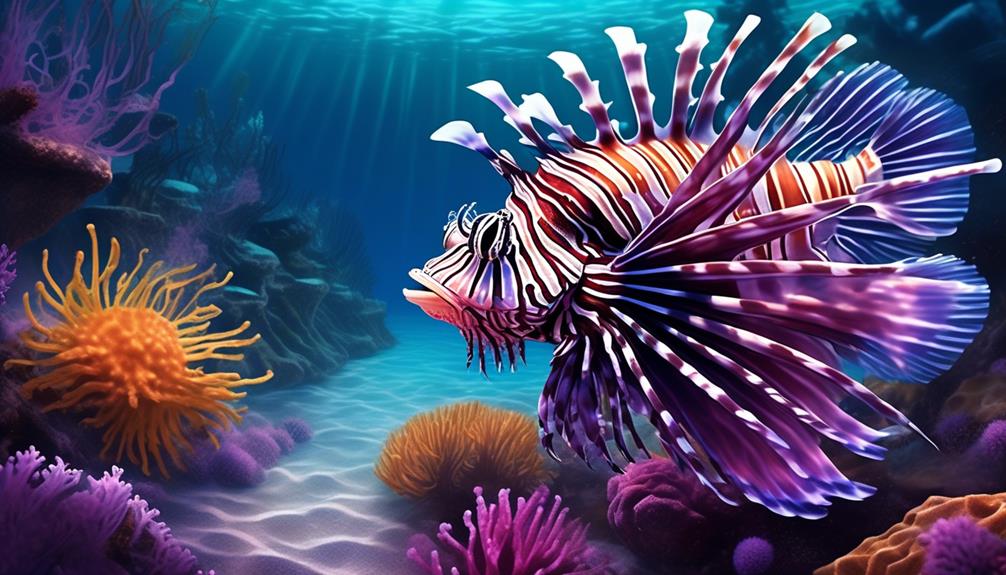
Parrot fishes, starfishes, crabs, pufferfishes, and moray eels are just a few of the fascinating creatures that have developed unique adaptations to feast on sea urchins.
Parrot fishes, commonly found in seagrass beds, rocky coasts, and coral reefs, are herbivores that primarily feed on epilithic algae. Some species, like the green humphead parrotfish, even feed on polyps and living corals.
Starfishes, belonging to the Asteroids class, are generalist predators that consume small animals such as snails, bivalves, and microalgae. They feed on sea urchins by wrapping themselves around them.
Crabs, found in both land and freshwater habitats, are omnivores that prey on a variety of organisms, including sea urchins.
Pufferfishes, mostly toxic and found in tropical regions, primarily feed on algae and invertebrates, including sea urchins.
Finally, moray eels, present in marine and brackish water, are predators that target smaller octopuses, fish, crabs, squid, cuttlefish, and sea urchins.
These unusual sea creatures showcase diverse feeding strategies and adaptations that allow them to devour sea urchins as part of their diet.
Underwater Villains: Sea Urchin Hunters
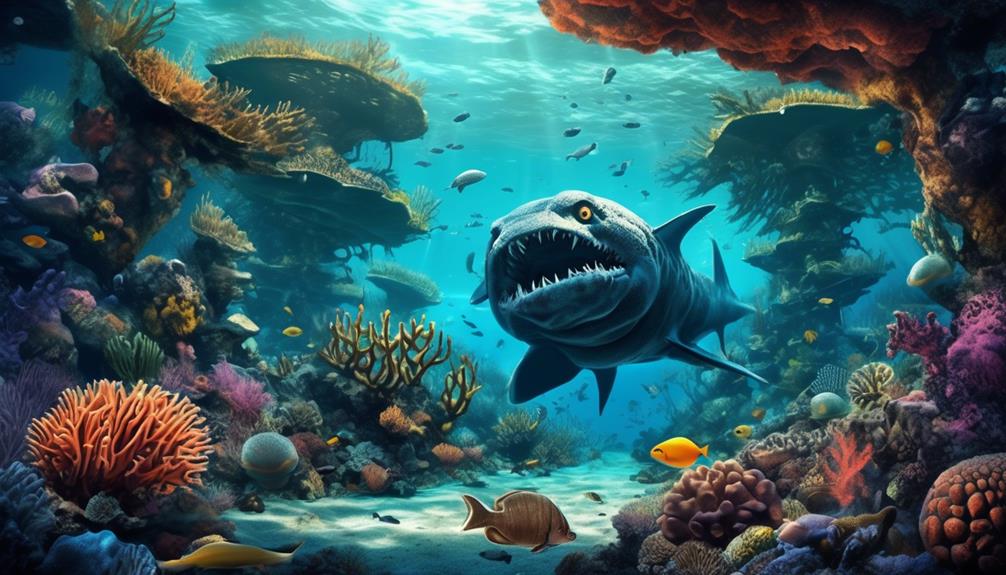
Crabs, starfish, pufferfish, and moray eels are among the underwater villains that relentlessly hunt sea urchins. Crabs, belonging to the order Brachyura, are natural predators of sea urchins. These omnivorous creatures have a varied diet that includes shrimp, clams, worms, seaweed, algae, small fish, snails, squid, mussels, and even other crabs. Male crabs are particularly aggressive and often engage in fierce battles to impress females.
Starfish, also known as asteroids, are generalist predators that feed on a variety of small animals, including sea urchins. With their star-shaped bodies and five arms, starfish wrap themselves around their prey to consume them. They’re also detritivores, relying on decomposing matter for nutrition.
Pufferfish, mostly found in tropical regions, are known for their toxicity. Some species of pufferfish are among the world’s most poisonous vertebrates. They feed primarily on algae and invertebrates, including shellfish and sea urchins. In certain cultures, the meat of some pufferfish species is considered a delicacy.
Moray eels, belonging to the eel family, are predators that feed on a variety of marine creatures, including sea urchins. With approximately 200 species worldwide, moray eels can be found in various patterns and colors. Some species have even been observed hunting in cooperation with other predators.
These underwater villains play an important role in the marine ecosystem by controlling the population of sea urchins and maintaining the balance of the underwater world.
Sea Urchin Feast: Unlikely Culinary Delights
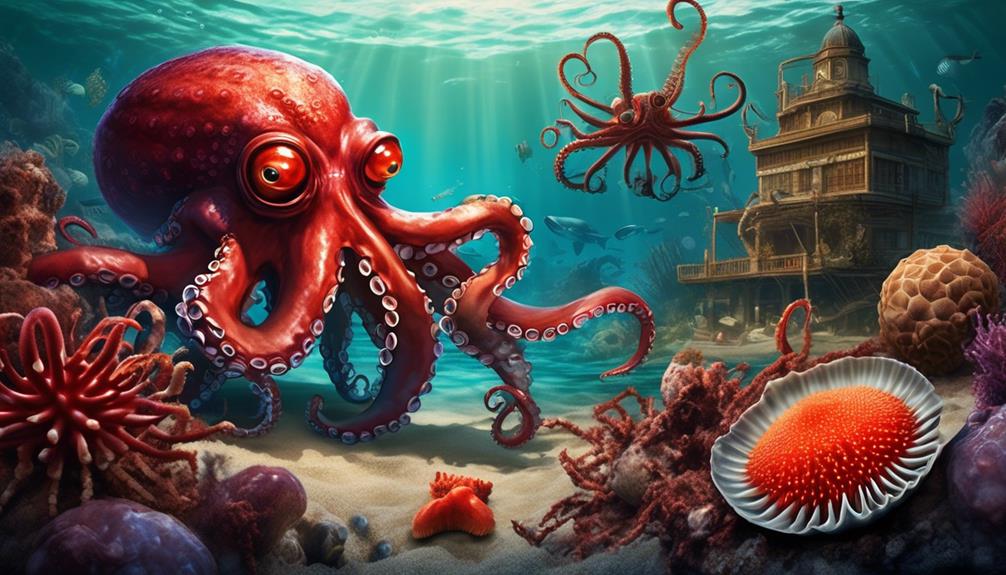
Among the diverse array of creatures that indulge in the sea urchin feast, there are unexpected culinary enthusiasts that savor the unique delicacy found within the spiky exoskeletons.
Sea otters and octopuses, indigenous to the northern and eastern sides of the North Pacific Ocean’s coasts, are known to relish sea urchins as part of their diet. Sea otters, weighing around 14-45 kg, have the ability to walk on land and live solely in the oceans. They use rocks as tools to crack open the shells of their prey, including sea urchins. Octopuses, belonging to the Octopoda order, have eight limbs and a soft body. Although they primarily feed on fish, crustaceans, and mollusks, they occasionally resort to consuming sea urchins when other food sources are scarce.
Another unlikely culinary delight is the parrot fish, which can be found in seagrass beds, rocky coasts, and coral reefs. Consisting of approximately 90-95 species, parrot fish are herbivores that feed on epilithic algae. Some species, like the green humphead parrotfish, even devour polyps and living corals.
Starfishes, belonging to the Asteroids class, are also unexpected connoisseurs of sea urchins. With their star-shaped bodies and five arms, starfishes are generalist predators that feed on snails, bivalves, and microalgae. They wrap themselves around sea urchins to consume their prey.
Crabs, found in both land and freshwater habitats, are natural predators of sea urchins. They vary in size, with some as small as a few millimeters and others with a leg span of 4m. Crabs are omnivores, feasting on a variety of organisms such as shrimp, clams, worms, seaweed, algae, small fish, and other crabs.
Pufferfishes, mostly toxic and found in tropical regions, also have a taste for sea urchins. These fishes primarily feed on algae and invertebrates, including shellfish and sea urchins. In certain cultures, the meat of certain pufferfish species is considered a delicacy.
Lastly, moray eels, present in marine and brackish water, prey on smaller octopuses, fish, crabs, squid, cuttlefish, and sea urchins. These eels, with their various patterns and colors, can be found in approximately 200 species globally. Some species of moray eels have even been observed hunting in cooperation with other predators.
These unlikely culinary enthusiasts contribute to the balance of marine ecosystems by consuming sea urchins and preventing their overpopulation.

Erzsebet Frey (Eli Frey) is an ecologist and online entrepreneur with a Master of Science in Ecology from the University of Belgrade. Originally from Serbia, she has lived in Sri Lanka since 2017. Eli has worked internationally in countries like Oman, Brazil, Germany, and Sri Lanka. In 2018, she expanded into SEO and blogging, completing courses from UC Davis and Edinburgh. Eli has founded multiple websites focused on biology, ecology, environmental science, sustainable and simple living, and outdoor activities. She enjoys creating nature and simple living videos on YouTube and participates in speleology, diving, and hiking.
- WILDLIFE THEMED T-SHIRTS
Cute Hedgehog Embroidered: Love Wildlife, Protect Nature Wildlife conservation tees
$35.00

